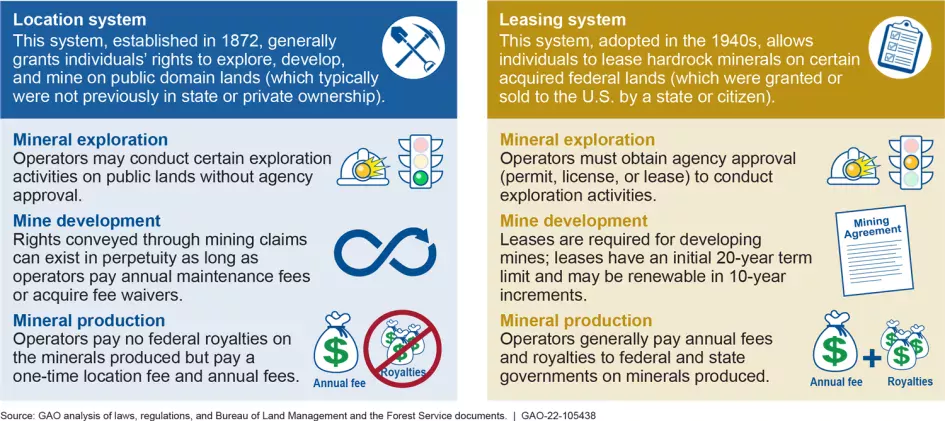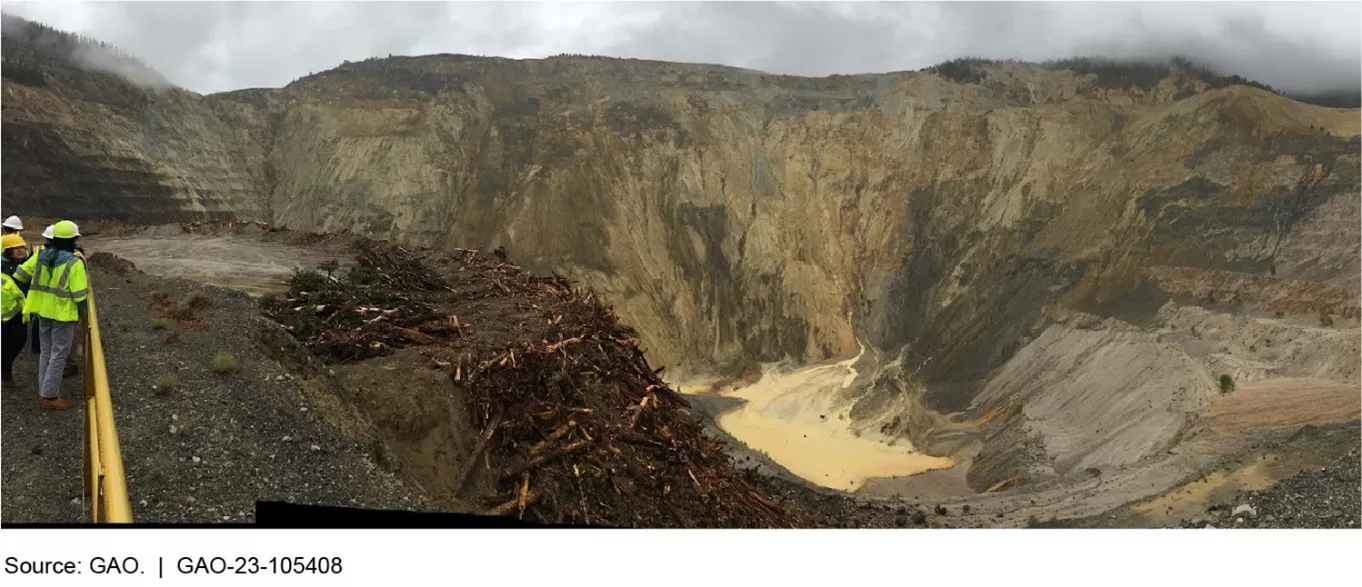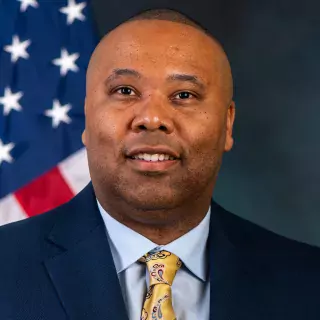Issue Summary
Minerals, such as gold, silver, and copper, play an important role in the U.S. economy by contributing to multiple industries, including transportation and defense. However, mining disturbs the land and creates the potential for serious public health, safety, and environmental hazards, particularly if a mine has been abandoned. The federal government may pay for the cleanup of abandoned mine contamination on federal lands if no viable potentially responsible party is identified.
Federal agencies oversee hardrock mining operations on federal lands using two different systems, depending on where the resources occur.
Mining systems differ primarily in the first three stages: mineral exploration, mine development, and mineral production
Image

However, agencies could improve how they manage the oversight of mining operations—especially in regards to governance and transparency, environmental stewardship, and administrative resources.
For instance:
- Royalties. As of September 2018, there were 748 hardrock mining operations on federal land. Most of these operations are managed under the location system and therefore aren’t subject to royalties. Consequently, the quantity of minerals produced from mines on federal lands under this system is unknown because agencies generally don’t collect data from mine operators that don’t have to pay royalties.
- Reclaiming land. The federal government established requirements in the 1970s for mine operators to reclaim the land after their operations ceased—i.e., minimize or address the environmental impacts of the mining operations. Mine operators before that period could extract hardrock minerals and abandon the mine without reclaiming it. As of 2019, federal agencies had identified about 140,000 remnants of mining operations from before the 1970s on lands they oversee, including unsecured tunnels and toxic waste piles. The U.S. Departments of the Interior and Agriculture spent approximately $109 million and $10 million, respectively, to clean up contamination at abandoned hardrock mines on the lands they manage during FYs 2017-2021—and both agencies said they have more abandoned hardrock mines than funds to clean them up. However, Interior hasn’t clearly communicated specific information about potential future cleanup costs for abandoned hardrock mines to Congress and the public.
- Improving management. In 2020, a number of stakeholders identified areas for improvement in the management of hardrock mining on federal lands. Among other things, they said agencies do not always have adequate resources to oversee mining programs and conduct timely reviews of mine plans.
Molybdenum Mine Contamination and Cleanup on Federal and Private Lands in New Mexico
Image


